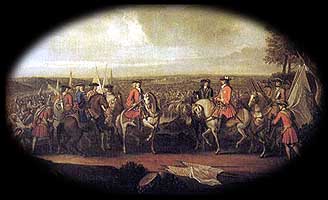 |
WSS
Campaign
Turn
One
Battle
of Weissenburg
|
|
|
 |
xxxxxxxxxxxxxxxxxxxxxxxxxxxxxxxxxxxxxxxxxxxxxxxxxxxxxxxxxxxxxxxxxxxxxx |
xxxxxxxxxxxxxxxxxxxxxxxxx |
| |
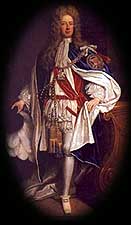
|
|
Captain
General John Churchill, the Duke of Marlborough.
|
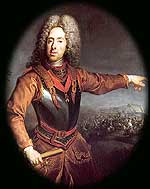
|
|
Prince
François Eugène of Savoy
|
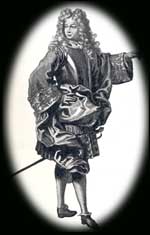
|
|
Camille
d'Hostun de la Baume, Duc de Tallard, Marshall of France
|
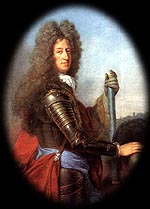
|
Prince
Maximilian II Emanuel Wittelsbach
Elector
of Bavaria
|
|
Welcome
to the WSS Campaign
Battle
of Weissenburg
Due to his having
time to prepare his defense against the advancing armies of Eugene and
Marlborough, Marsin was given a choice of 5 areas to select where he would
make his defense. These choices were terrain maps that were rolled fro
from the list of 100 game maps in the back of the set of rules - Warfare
in the Age of Reason.
The map that marsin
chose is the larger one shown at the top. The French deployment zone is
outlined in blue.
|
 The
French, having had time to prepare, were able to throw up a wall or gabion
entrenchments, which they formed a barrier between the fortress wall, and
the light woods in the center. Behind this wall, they lined up half of
their infantry and all of their guns. The
French, having had time to prepare, were able to throw up a wall or gabion
entrenchments, which they formed a barrier between the fortress wall, and
the light woods in the center. Behind this wall, they lined up half of
their infantry and all of their guns.
This was supported by a reserve command
of all of the cavalry which had been withdrawn from the flank. A battery
of guns in the fortress had enfilading fire across the front of the defenses. |
 Opposing
this French defensive line was the English and Minor German states under
the command of Marlborough. While on Marlborough's right, the German battalions
held their advance back and traded artillery fire with the French, the
20 English battalions on the left began their assault. Here, towards the
top of the photograph, they can be seen approaching the defensive line. Opposing
this French defensive line was the English and Minor German states under
the command of Marlborough. While on Marlborough's right, the German battalions
held their advance back and traded artillery fire with the French, the
20 English battalions on the left began their assault. Here, towards the
top of the photograph, they can be seen approaching the defensive line.
Musketry and artillery created havoc amongst
the English battalions, which twice reached and in places got over the
entrenchments, but in both cases, were driven back by cleverly placed and
expertly timed counter offenses by the French infantry and cavalry reserve. |
 Meanwhile,
over on the allied left, one if Eugene's cavalry divisions, having nothing
to oppose it (upper right of photo) moved across the plain and penetrated
into the rear of the battle area. The French cavalry had declined to occupy
this flank in preference to providing a rear support for the entrench area
(where it was in fact sorely needed and where it performed effectively. Meanwhile,
over on the allied left, one if Eugene's cavalry divisions, having nothing
to oppose it (upper right of photo) moved across the plain and penetrated
into the rear of the battle area. The French cavalry had declined to occupy
this flank in preference to providing a rear support for the entrench area
(where it was in fact sorely needed and where it performed effectively.
French cavalry was also used to support
the open right flank of the infantry division in the woods. |
 Meanwhile,
in the center, opposite the woods, another 20 battalions of Eugene's Prussians
and Danes advanced against the Irish battalions of the French army. Getting
up close in the woods, there began a fusillade of musketry exchanges, with
the Irish slowly giving but little ground. (in the game we substituted
Hanoverians from Anhalt Dessau's army, because the Dane's owner was unable
to make the game). Meanwhile,
in the center, opposite the woods, another 20 battalions of Eugene's Prussians
and Danes advanced against the Irish battalions of the French army. Getting
up close in the woods, there began a fusillade of musketry exchanges, with
the Irish slowly giving but little ground. (in the game we substituted
Hanoverians from Anhalt Dessau's army, because the Dane's owner was unable
to make the game). |
 Here
the English battalions are seen bludgeoning into the defense. This is shortly
before the battalion of North Gray pushed back the 1st battalion
of Vermandois (up against the stream) and managed to cross the barricade.
Right up in the fore ground can be seen Marshall Marsin and the Regiment
of Royal, who charged the English regiment, sending it back across the
barricade, at which point the English assault collapsed and many of it's
battalions began running back out of artillery range - the entrenchment
line held. Here
the English battalions are seen bludgeoning into the defense. This is shortly
before the battalion of North Gray pushed back the 1st battalion
of Vermandois (up against the stream) and managed to cross the barricade.
Right up in the fore ground can be seen Marshall Marsin and the Regiment
of Royal, who charged the English regiment, sending it back across the
barricade, at which point the English assault collapsed and many of it's
battalions began running back out of artillery range - the entrenchment
line held. |
 The
French took immediate advantage of the Allied disorder and
launched immediate
sorties out of their entrenchments with several cavalry squadrons. These
managed to flank a couple of artillery positions and disordered several
of the German battalions on the flank. In the far ground (upper left) of
the photo - the English can be seen trying to reorganize their disarrayed
forces. The
French took immediate advantage of the Allied disorder and
launched immediate
sorties out of their entrenchments with several cavalry squadrons. These
managed to flank a couple of artillery positions and disordered several
of the German battalions on the flank. In the far ground (upper left) of
the photo - the English can be seen trying to reorganize their disarrayed
forces. |
 The
English division eventually managed to sort itself out and prepared for
a new assault. A few cavalry engagements on the flank of the woods were
generally undeceive, but a number of Danish (Hanoverian in our game)
squadrons were repulsed by the French - the woods proving difficult to
fight an maneuver in. The
English division eventually managed to sort itself out and prepared for
a new assault. A few cavalry engagements on the flank of the woods were
generally undeceive, but a number of Danish (Hanoverian in our game)
squadrons were repulsed by the French - the woods proving difficult to
fight an maneuver in.
Just when it seemed that the French might
hold out - the French division in the woods, suddenly and unexpectedly
began to break and run. This resulted in an entire collapse of the French
Right infantry. Fearing the 20 battalions that would imminently emerge
from the wood, Marsin ordered a general retreat - but severely out numbered
in horse and foot, the withdrawal turned into an uncontrollable rout resulting
in the capturing or destruction of 2/3rds of the French army.
Marsin survived the battle but his exact
location is in doubt. |
|
|
|
|
Return
to Campaign Head Quarters
Sic Transit Gloria
Mundi
|
|
|
 |
|
xx |
|
|
Copyright
1997, 1998, 1999, 2000, 2001, 2002, 2003 Ian Croxall
Salem,
Oregon. USA
SIC
TRANSIT GLORIA MUNDI
|
|
|
|